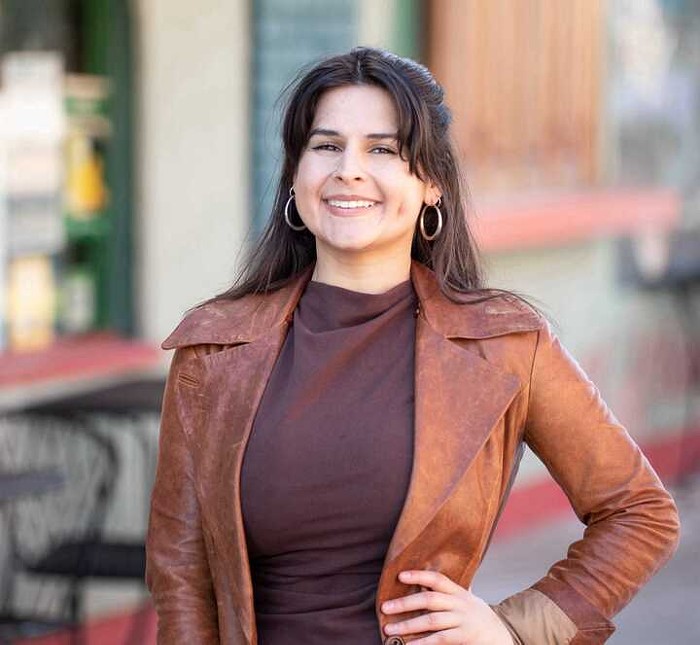I have a question I can’t seem to get an answer to.
After two men were murdered within a day of each other on 28th Avenue South in Seattle’s Central District, detectives told community members and the media they went door-to-door to interview potential witnesses. No one would talk, the detectives said, because of something called the “No Snitch Code.”
I live on 28th Avenue South, not far from the scene of the shooting.
Why didn’t police talk to me? Or my neighbors?
On April 24, the evening DeSzaun Smallwood was shot and killed, Nicci Abueg sat on her porch and watched as a clutch of police officers gathered inside of the yellow-police-crime-tape square they’d made for themselves.
From her view, Abueg could see the outline of Smallwood’s body under a white sheet. “He was so small,” Abueg recalled. “I was scared at first that it might be one of the kids on the block. There are a lot of kids here.”
Smallwood was no kid. But at 20 years old, he was young.
At a community meeting held on May 7, police said they believe Smallwood might have been involved in some sort of fight between rival gangs.
It turns out that in the Central District, this stretch of 28th Avenue South between Jackson and Norman Streets has a notorious history of gang and drug activity. Thirty years ago, it was crack. Then gangs. Then quiet. At least until this spring, when a group of young guys who call themselves the “Deuce-8” gang began to resurface.
The evening Smallwood died, Abueg sat on her porch and waited for a chance to talk with authorities. She had already approached and spoken with them briefly, but she wanted to stand back as they cleared the crime scene. Her neighbor Patricia Valentine also watched, standing at the yellow tape and praying. The two did not see Smallwood get shot, but their houses are within yards of where he was murdered. On this evening, the two were both willing to give authorities whatever information they could.
But police never attempted to interview Abueg or Valentine.
“We watched them,” said Abueg, referring to police. “They never came by.”
“I thought maybe I didn’t hear them knock on my door,” said Valentine. “But there were other people in my house, and none of them heard a knock either.”
After hearing their stories, and sitting at that May 7 community meeting and hearing the police detectives tell us they’d already gone door-to-door looking for leads, I wanted to know for myself: Were Abueg and Valentine the exception or the rule?
So I went door-to-door on the block where Smallwood died and asked: “Did a police detective come to talk with you after the shootings?”
Everyone I spoke to responded with a resounding “No.”
And these were not people trying to get someone off their front porch. They weren’t saying, “No, go away.” They were perplexed and curious, as if to say, “Were the police supposed to come talk to me?”
My neighbors did, however, share sightings of unfamiliar cars speeding down the street after the shootings and detailed descriptions of two groups of guys fighting minutes before Smallwood’s murder. Police, they say, never talked to them about any of this. Some of them even called dispatch themselves, to share what they saw or heard that night.
Sure, none of these people have the name, address, and phone number of Smallwood’s killer—but he was shot at 7 p.m. It was still daylight. People were running, walking their dogs, and driving home from work. I always thought that there’s no detail too small when it comes to a murder investigation.
“These are not the smartest guys out there,” remarked one of the gang-unit detectives at the community meeting I attended. “They don’t know how to aim very well,” he chuckled. In the same breath, the cop tried to reassure the crowd by saying we had little to worry about, these guys were just targeting each other. The room was silent.
Afterward, a neighbor said, “What about Justin Ferrari?”
Two years ago, Ferrari was at the intersection of East Cherry Street and Martin Luther King Jr. Way with his two children and his parents when he was struck by gunfire. The shooter, Andrew Patterson, told authorities he was aiming for another man. The bullet missed its intended target and hit Ferrari. Patterson was caught thanks to diligent police work, and what was reportedly the piecing together of bits of information. In this light, the police officer’s comments at the community meeting, while intended to be reassuring, came off to me as flippant.
This experience brought to mind what I call “the script” Seattle police follow when a crime involves young people of color killing each other. I used to report for a local television station in town, and every time I’d cover a gang-related shooting, police would say one of the following:
We have no suspects and no one is coming forward.
The issue is, no one is coming forward.
There is this thing called the “No Snitch Code.” No one is talking.
Sometimes they’d say this within minutes of getting to the scene of a murder.
At that community meeting, detectives again relayed that same message. And so I asked that question I’ve been having problems getting an answer to: “How do police decide who is important to talk to during investigations like this one?”
“We’ll talk with you after the meeting,” said one of the gang-unit detectives. After the meeting was over, the officers swiftly left the building. We never had our talk.
I’m not naive. I know the “No Snitch Code” is real.
There is a culture of mistrust when it comes to police within black communities, and it is deep-seated. But in murder investigations, even if police feel like they know potential witnesses will give them the same answers, isn’t it their jobs to ask anyway?
“If you spend so many years hearing the same thing, maybe you project that idea onto an entire community and stop trying,” theorized Abueg, as we discussed why police were so quick to say no one would talk, without attempting to interview people nearby. “What it ends up sending,” Abueg said, “is a message that some people’s lives aren’t as important as others.”
Equally alarming for me is that this type of policing perpetuates an inherent distrust in the police, further reinforcing that “No Snitch Code” the Seattle Police Department talks so much about.
UPDATE: The Seattle Police Department offered a response to this story on May 21, 2014.
![]()
Tonya Mosley is a freelance broadcast reporter. She previously worked for seven years at Seattle’s KING 5 television.



















